How you can run a successful iPhone launch with an online queue
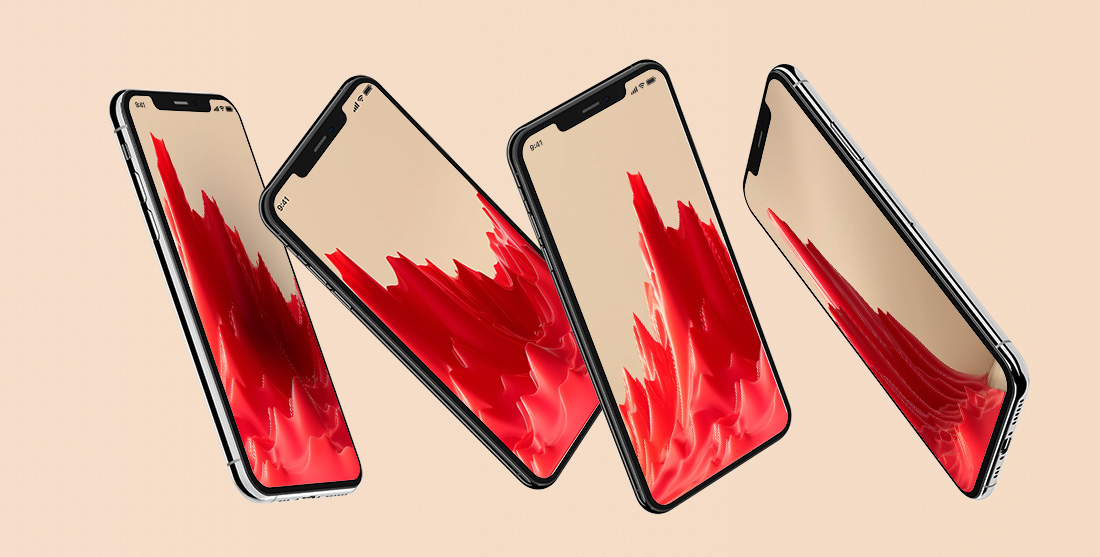
The iPhone launch is the biggest mobile tech event of the year. Hundreds of thousands of consumers across the globe line up in virtual and physical queues to be among the first to get their hands on the new edition of the world’s most popular phone. Discover how major telco and retail sites prepare for demand with an online queue, how these solutions work, and how you can use them to capitalize on your next iPhone launch
Since its debut in 2007, Apple’s annual iPhone reveal has generated massive media hype and consumer demand. It’s among the biggest days of the year not just for Apple, but also for telco companies, which see a huge boost in sales, upgrades, and new plans.
But high-profile product launches don’t come without challenges. The iPhone launch drives massive surges in online traffic to telco websites, often causing them to come crashing down when they’re at their most visible. Not even Apple’s website is immune to crashes caused by iPhone launch traffic spikes.
Discover why large telco companies across the globe use online queues to handle demand during the annual iPhone launch, how these solutions work, and why it’s so hard to keep sites online during massive product launch traffic spikes.
Brands use an online queue (AKA a virtual waiting room) during major events like the iPhone launch to protect their websites from surging traffic and ensure a smooth and fair user experience.
Many companies learned the hard way that web traffic during the iPhone launch is anything but ordinary. Eager buyers have even brought down Apple’s site over the years. Apple's challenges with web traffic persist despite their recent strategy of shutting down their whole store for hours before the launch to prepare for demand.
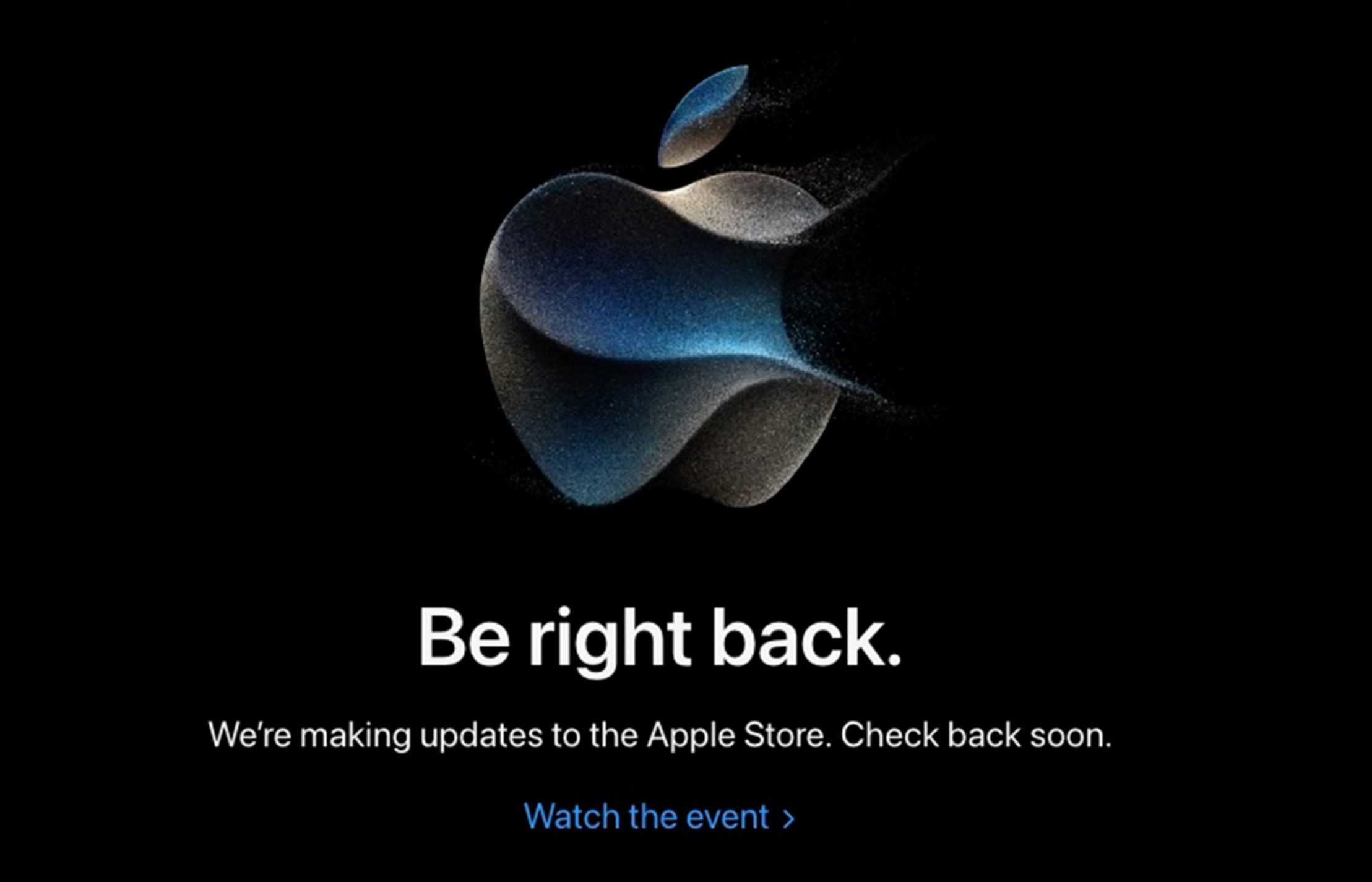
Site problems like these harm sales and frustrate customers on telco and electronics retailers’ most business-critical days. Crashes, slowdowns, and errors caused by extreme load create risks like:
- Sending customers to competitors: With the iPhone available from various retailers, a crashed website can send impatient customers right to competitors.
- Harming long-term revenue: The impact goes beyond just sales on launch day, with lost subscriptions and renewals harming your bottom line long after the pre-orders are over.
- Jeopardizing future launches: Apple prioritizes retailers primarily based on the volume of iPhone sales they achieve, so a failed launch day means losing out to competitors and being relegated to the back of the line for restocking.
As the Reddit exchange below shows, website crashes during iPhone launches are so common consumers have almost come to expect them. But major companies like AT&T have a solution to the challenge—one that keeps the site running smoothly and the sales coming in.
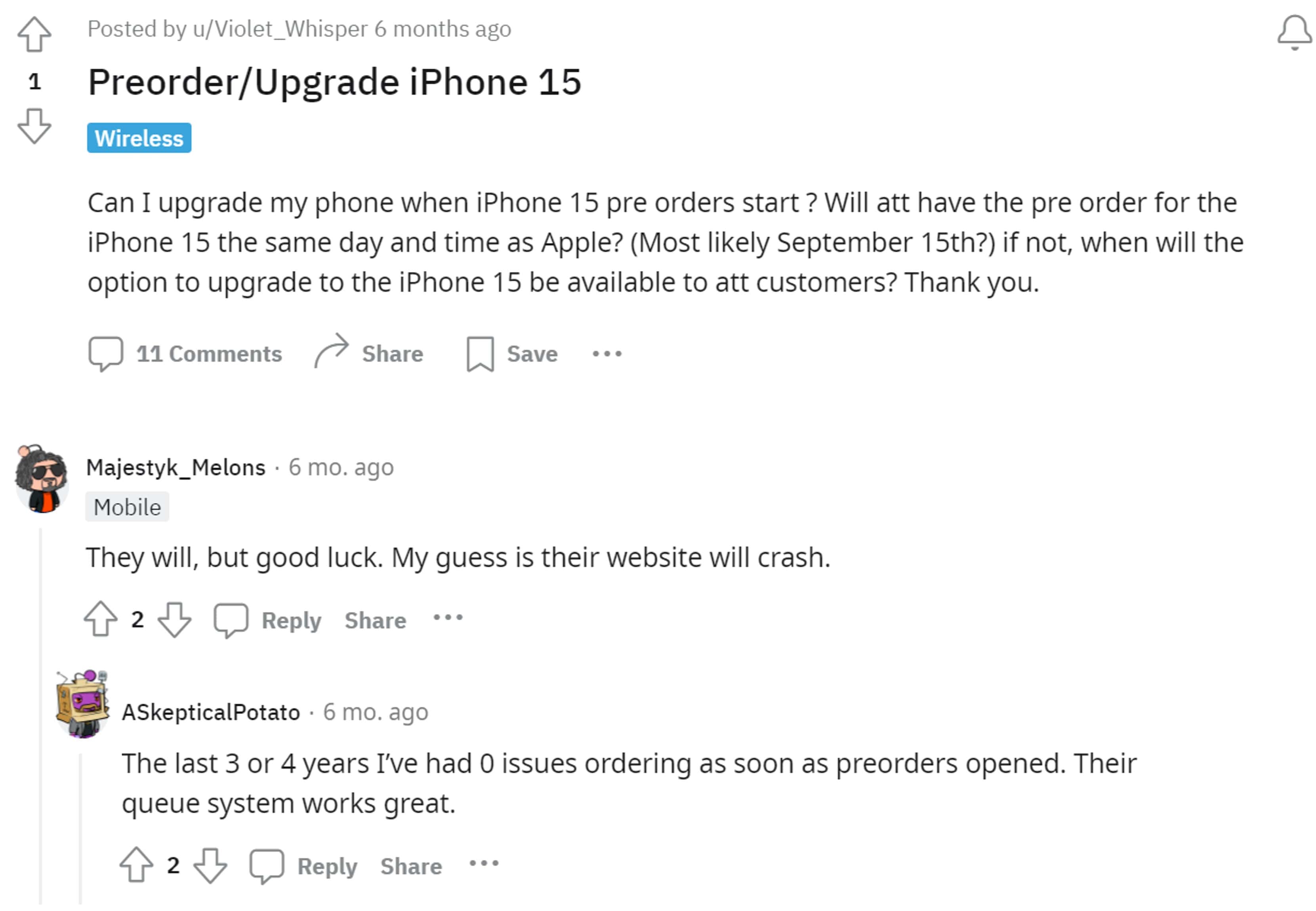
The queue system the Reddit user above says “works great” for AT&T is called a virtual waiting room. It’s a software solution that lets you make the most of your business’s moment in the spotlight by keeping your site online, ensuring fair visitor access, and delivering a seamless customer experience.
A virtual waiting room can help you:
- Ensure website performance: The virtual waiting room takes the spike in load from the launch and lets you control the flow of customers into your site, ensuring you never exceed the technical capacity of your systems and can sell as fast as possible without crashing.
- Improve customer experience: Virtual waiting rooms replace the frustrating experience of a website crash or slowdown with transparent and controlled access, including detailed info on spot in line and estimated wait time on a branded page that can feature interactive elements like videos or games.
- Deliver fair access: In scenarios like limited-time offers or exclusive product launches, a virtual waiting room provides sophisticated fairness mechanisms like first-come-first-served access or live raffle randomization, ensuring all customers have a fair shot at your offer.
RELATED: The Comprehensive Guide to Virtual Waiting Rooms: All Your Questions Answered
Virtual waiting rooms work by automatically redirecting online visitors to a waiting room when they enter a covered part of the user journey, for example visiting a landing page or proceeding to checkout.
Customers are seamlessly flowed from the site to a branded waiting room like the one below, where they see their number in line, their estimated wait time, and a progress bar. From here, they're flowed back to your site at the rate it can handle in a fair, controlled order.
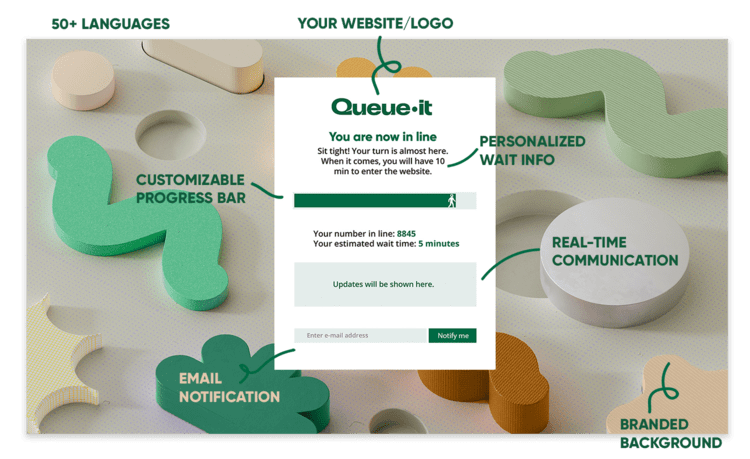
While brands often customize their waiting rooms both in style and in URL to look like the original site, the visitors in them are hosted on the virtual waiting room provider’s servers. This means no strain is placed on the target website’s servers while visitors wait for access.
Let’s look at some real-world examples that show how the virtual waiting room protects telco sites during iPhone launches.
Telenor is a leading telecommunications company across the Nordic region, with 158 million subscribers globally. After years of issues during iPhone launches, they implemented Queue-it’s virtual waiting room.
Now, when Telenor launches the new iPhone, shoppers who visit the pre-order page are automatically flowed to a customized queue page where they get their position in line and detailed wait information. From here, they’re flowed to the site in first-in-first-out order at exactly the rate Telenor can handle.
"Queue-it worked exactly as we expected and we did not experience the well-known performance issues from previous years. This enabled a much-improved customer experience compared to past launches."
CHRISTIAN EILERSEN, HEAD OF WEB SALES DEVELOPMENT, TELENOR
To give a sense of how much iPhone launch traffic exceeds what telco websites usually process, here’s a behind-the-scenes look at the traffic to a recent iPhone launch we worked with.
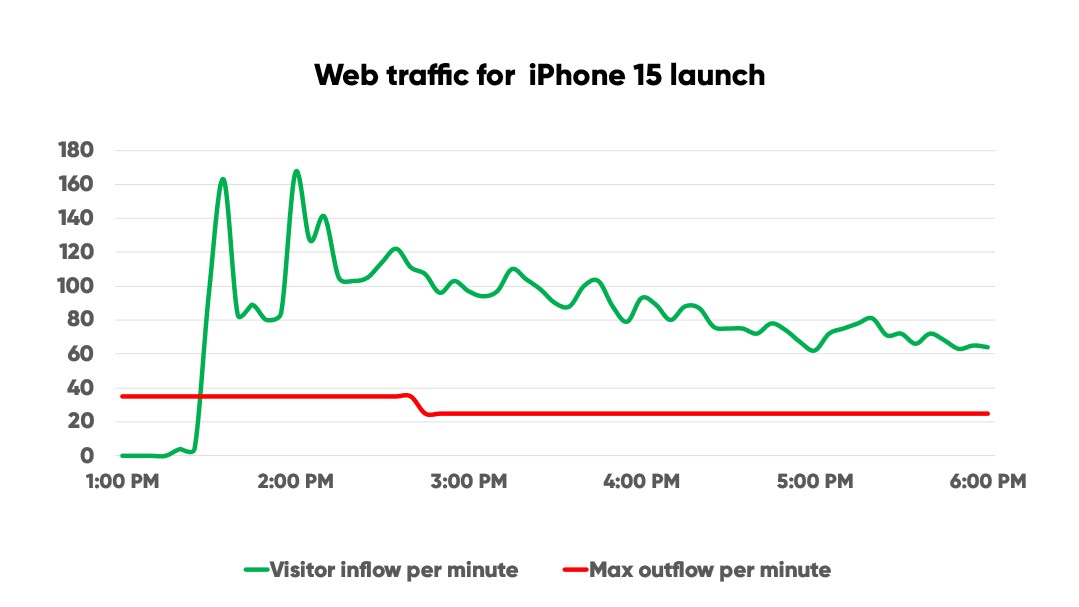
The red line (Max outflow per minute) shows the maximum number of visitors the site can handle purchasing an iPhone per minute. The green line (Visitor inflow per minute) shows the actual traffic on launch day—which peaked at more than 4x what the site could handle. For almost 6 hours, visitors arrived to purchase iPhones in volumes far larger than the site could handle.
But with Queue-it in place, these excess visitors didn’t bring the site down. Instead, each customer got fair, seamless access, and the company sold through their iPhones at maximum capacity without crashing.
Break traffic records without breaking your website

They do. But at scale, every system breaks.
There is no “too big to fail” in the world of websites. Amazon, Walmart, Apple, the IRS—surging web traffic has taken all of them offline.
If you’re preparing for a iPhone launch-level traffic spike, you’ll want to optimize your website in many ways, including scaling your systems.
But scaling alone is expensive at best, and risky at worst. It can be:
- Expensive: Most websites are built to perform under their usual amount of traffic. Building a website that can handle huge traffic peaks that only come a few times a year is like buying a house with 10 extra bedrooms and bathrooms because your family comes to visit sometimes—it’s expensive, impractical, and unnecessary.
- Reactive: Because traffic levels are hard to predict and autoscaling takes time to kick in, your systems likely won’t be ready in the critical moment they’re needed.
- Risky: Even if autoscaling or pre-scaling could handle these surges, bottlenecks almost always emerge. This means traffic still overloads areas that are difficult or impossible to scale, such as databases, inventory management systems, third-party features like payment gateways, and performance-intensive features like dynamic search or a “recommended for you” panel.
A virtual waiting room complements your autoscaling approach and gives you confidence your site will perform by controlling what other crash-prevention tactics can't: the flow of traffic to the site.
"Nobody builds a website to handle hundreds of thousands of people just for a limited amount of time. Throughout the day it’s different, but having that major peak is insane. Queue-it is a great solution that saves the day and it works flawlessly."
ROBERT WILLIAMS, DIGITAL MANAGER

Preparedness is key to making the most of your brand’s biggest days. Whether it’s an iPhone launch, a ticket sale, or a sneaker drop, a virtual waiting room solution like Queue-it ensures you’re not only ready for the surge, but also positioned to capitalize on it. You get the confidence knowing your big brand moment won't turn into a technical crisis.
Queue-it is the market leading virtual waiting room solution, having served over 75 billion users across 172 countries. With a mission to deliver online fairness to all, Queue-it empowers the world’s biggest businesses to perform on their busiest days. When Ticketmaster, The North Face, and the State of New Hampshire need to manage high-demand events, they turn to Queue-it. Book a demo today and start preparing for your next high-profile product launch or sale.